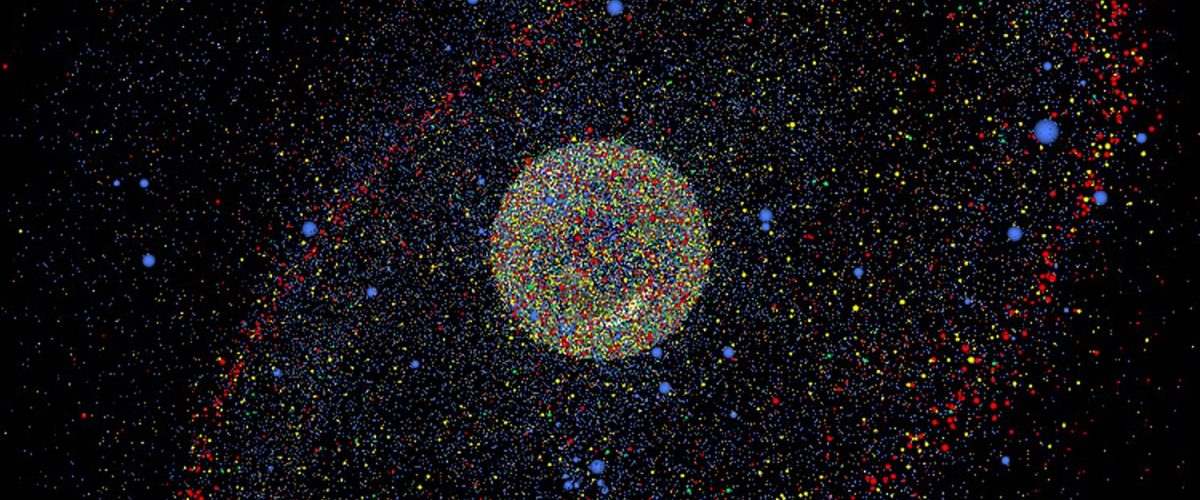Almost 8,500 objects have been orbited since 1957. These include 75 satellites for the GPS network, the international space station ISS, space telescopes and satellites from private companies. Since it is still comparatively expensive to bring a satellite into earth orbit at a price of around half a million euros per satellite, the responsibles are trying to make the satellites as durable as possible. However, nothing lasts forever and sooner or later every technology in orbit breaks.
These no longer functioning man-made objects in space are called space junk. These are not only completely switched off satellites, but also small individual parts such as screws or other small metal or plastic pieces. It is estimated that there are currently around 70,000 objects with a size of over ten centimeters and between 500,000 and 70 million objects with a size of less than ten centimeters in Earth orbit. With so many individual parts, it is obvious that they will collide at some point. But what is the probability of a collision?
Heiner Klinkrad, a former expert on space junk at the european space operations center, assumes that due to the enormous number of satellites in low earth orbit, a collision of destructive proportions could occur about every 10 years. Other experts are a little more cautious with a specific number, but overall there is agreement that the chance is steadily increasing and is already a real danger today.
The consequences of a collision range from barely noticeable disruptions to global catastrophes. If, for example, one of the satellites responsible for GPS positioning on earth were hit, we would for a certain amount of time no longer have a GPS network. Furthermore, space debris falls down to us at some point due to the earth’s gravity and can cause considerable damage. The so-called Kessler syndrome would be even worse. It describes the effect of a collision, which produces many new small individual parts, which in turn lead to new collisions, until the low-earth orbit is transformed into an insanely fast storm of garbage. This worst-case scenario would mean that we would no longer have any satellites and that we would not be able to leave our home planet for a very long time.
Of course we hope that the Kessler Syndrome will never occur and researchers all over the world are already working on solutions to rid our earth orbit of space debris.
Source of the picture : https://magazin.tu-braunschweig.de/m-post/bild-des-monats-weltraumschrott-simulation/
Other Sources: https://www.youtube.com/watch?v=oHCqzNHb6hQ&t=327s , https://de.wikipedia.org/wiki/Weltraumm%C3%BCll

